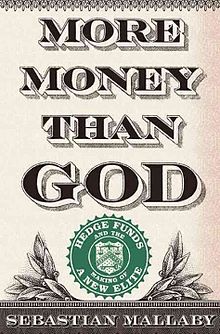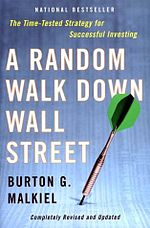More Money Than God
Sebastian Mallaby’s book, More Money Than God: Hedge Funds and the Making of the New Elite, looks at the birth and rise of the hedge funds. Perhaps more interestingly, it seeks to answer the question of how those funds made money if you subscribe to efficient market theory (which you should).
A. W. Jones, the original hedge fund (or “hedged” as he called it) could explain it’s profits by an inefficient market. Before Jones, the concept of a hedge fund did not exist and he and his team began doing things that nobody else was doing. They were simply more efficient.
In the late 1960s and 1970s, Steinhardt, Fine, Berkowitz & Co. were the biggest players. This could be explained by two factors. First, they could have simply been lucky. By the time they came along there were 200 hedge funds, so the chance of one of them consistently beating the market was fairly high. Secondly, there was what you could argue was insider trading. Perhaps not to an illegal level, and it is unfair to level this claim just at hedge funds, however, it was clearly going on.
Over the next few decades, hedge funds continued to generate money. Can this be reconciled with efficient market theory? Yes and no. A lot of the profits came from exploiting loopholes and finding inefficiencies in the market. The fact that this was possible shows that markets are not always efficient.
However, if you take Malkiel’s argument that this might be there, but is just not useful, that view holds. Firstly, you have to keep exploiting new ideas because pretty soon everyone else copies you. Secondly, for an investor, there is no way to know in advance who will find the inefficiencies. It is easy to work out which hedge funds found them after the fact, but picking them in advance could well be impossible.
Also, while some funds do have amazing performance, most are not. In a 2006 paper, “The A,B,Cs of Hedge Funds: Alphas, Betas, and Costs” Roger Ibbotson and Peng Chen calculated that after adjusting for biases, the average return was 9%.
The book’s conclusion is generally agreeable. Index funds represent the best way forward for consumers, but hedge funds maybe represent good value for institutional investors.

